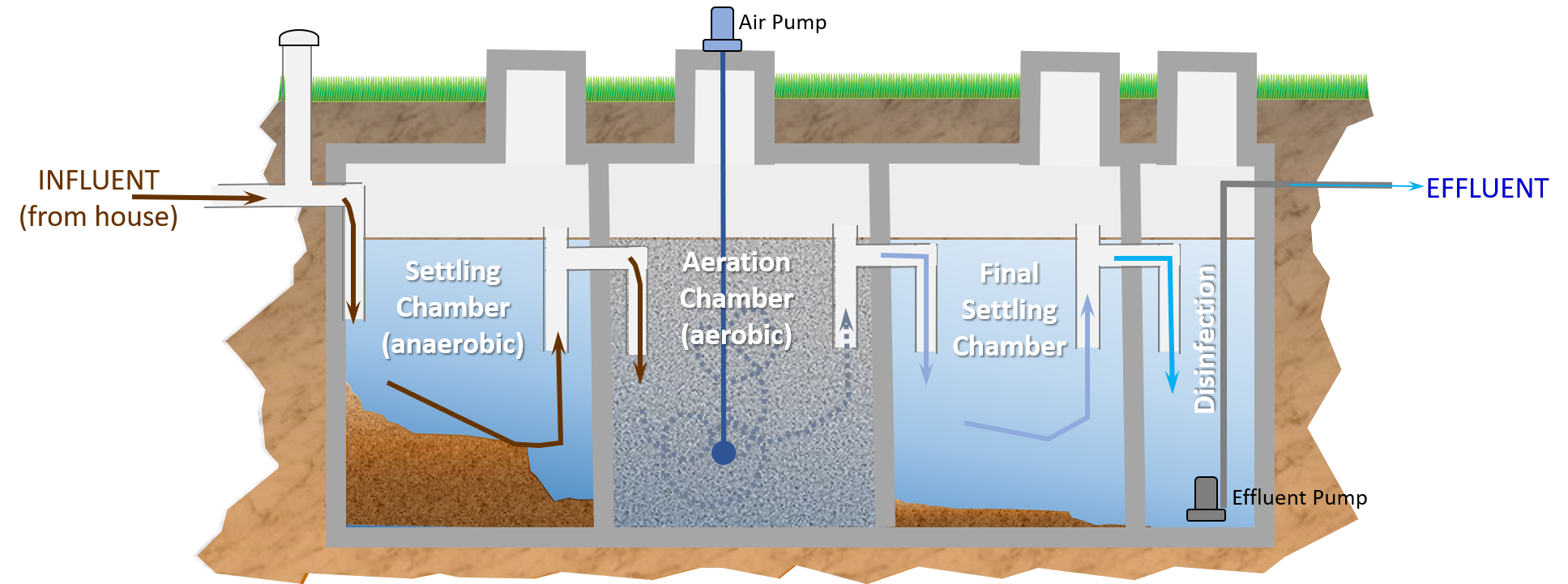


Ask an Engineer Why and How, Installment 4: What Happens After I Flush? Number 3, Onsite Aerbobic Treatment
Monday, April 1, 2019You have a beautiful piece of property where you want to build a home.
There are no sanitary sewers near.
The soils are clay and require a large leach field for a septic system to work, but the lot is too small.
What do you do?
You have to treat your wastewater to the degree that it can be discharged to the surface, although in most areas a sand mound is required and surface discharge is not allowed, so essentially you need to construct your own wastewater treatment plant. It can be done and is quite common.

An Aerated Wastewater Treatment System (AWTS, also Aerated Treatment Unit-ATU) is essentially a small wastewater treatment plant similar to what I outlined in Number 2 of this series, but that fits in roughly the same footprint that I outlined in Number 1 (get it? Number 1, Number 2… I can keep ‘em coming…). Unlike a septic tank they require electricity to operate a pump and a blower, they have mechanical components that require regular maintenance, and they require regular inspections and an experienced person to ensure that they are operating correctly. They are not the first choice for onsite wastewater treatment, but sometimes they’re the only effective choice.
The first chamber of an AWTS is essentially a small septic tank. The heavy solids settle-out and anaerobic bacteria eat them. Oxygen is added to the next chamber and this creates an environment that allows more aggressive aerobic bacteria to flourish. The mixing caused by the air in the water keeps these bugs suspended and gives them good contact with floating waste (food). We call this mixing of sludge, bacteria and water “mixed-liquor” – I prefer gin and vermouth when I mix my liquors but knowing about the former is what allows me to be able to buy good versions of the latter.
The settling chamber causes the sludge to separate from the water. This sludge is not poo, its dead and dying bacteria that ate the poo. At a wastewater treatment plant, we treat this sludge further and it becomes “stabilized” (less stinky). But in an AWTS we just let it accumulate, compress and degrade over time. The operators that must inspect and maintain the AWTS yearly or quarterly (depends on the rules for your locale) will check the sludge level and recommend when it needs to be pumped – which could be every 3 years to every 20 years depending on use and tank design. The pumped sludge is then taken to a wastewater treatment plant, though in some areas, and under some conditions, it can be tilled into the soil on farm land.
So that’s a “brief”, 3-part, broad-flush discussion of wastewater treatment suitable for a conversation starter at dinner parties. But I’d recommend against it. I’ve tried. Not well-received.
When in public, hold your tongue if you want to talk about things that make you hold your nose!

Howard
If you have a specific question, or a topic that you would like learn about, drop me a line at Engineer@HamiltonConsultingEngineers.com. Include “Ask an Engineer” in your subject line. I will respond.